Last week, Architectural Record hosted its first-ever Sustainability in Practice summit. The half-day event, organized by Record editors Josephine Minutillo and Joann Gonchar in collaboration with the MIT School of Architecture and Planning (SA+P), took place at the school’s Samberg Conference Center overlooking the Charles River in Cambridge, Massachusetts. The speakers—a combination of SA+P professors and architects and sustainability consultants from across the globe—presented research that could be translated into practice, as well as built projects that are pushing the current limits of design and construction technology.
Opening remarks by Nicholas de Monchaux, MIT Architecture department head, set the tone for the event. He characterized the current period in history as one where humans’ relationships with both nature and technology are being reimagined. “It is a pivotal time,” he said.
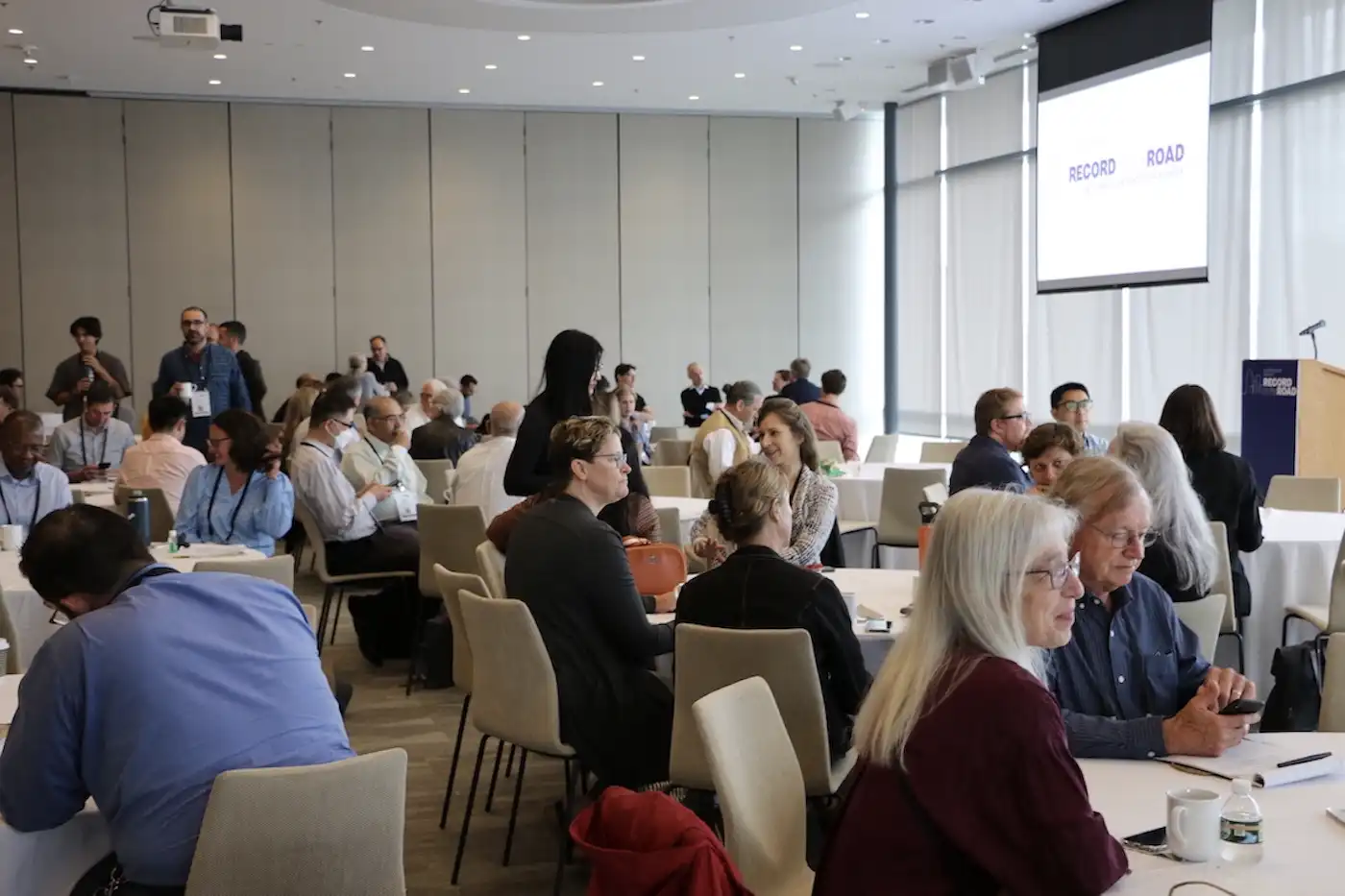
Attendees gather at the June 20 Boston edition of Record on the Road: Sustainability in Practice. Photo © Architectural Record
SA+P professor Christoph Reinhart gave a talk with Matt Noblett, a partner in the Boston office of Behnisch Architekten. Reinhart drove home the urgency of the climate problem, presenting color-coded maps showing that no countries have plans compatible with limiting the earth’s warming to 1.5 degrees Celsius (the threshold going beyond which will unleash the worst effects of climate change). Reinhart gave an overview of ClimateStudio, the performance simulation software he has developed in collaboration with other academics, building scientists, and designers. The goal is to give consultants and architects the necessary tools to positively impact the sustainability of the planet. Noblett discussed the evolution of such design and analysis tools, comparing two of his firm’s LEED Platinum projects: the 2004 Genzyme headquarters in Cambridge, and the recently completed science and engineering complex on Harvard University’s new Allston campus.
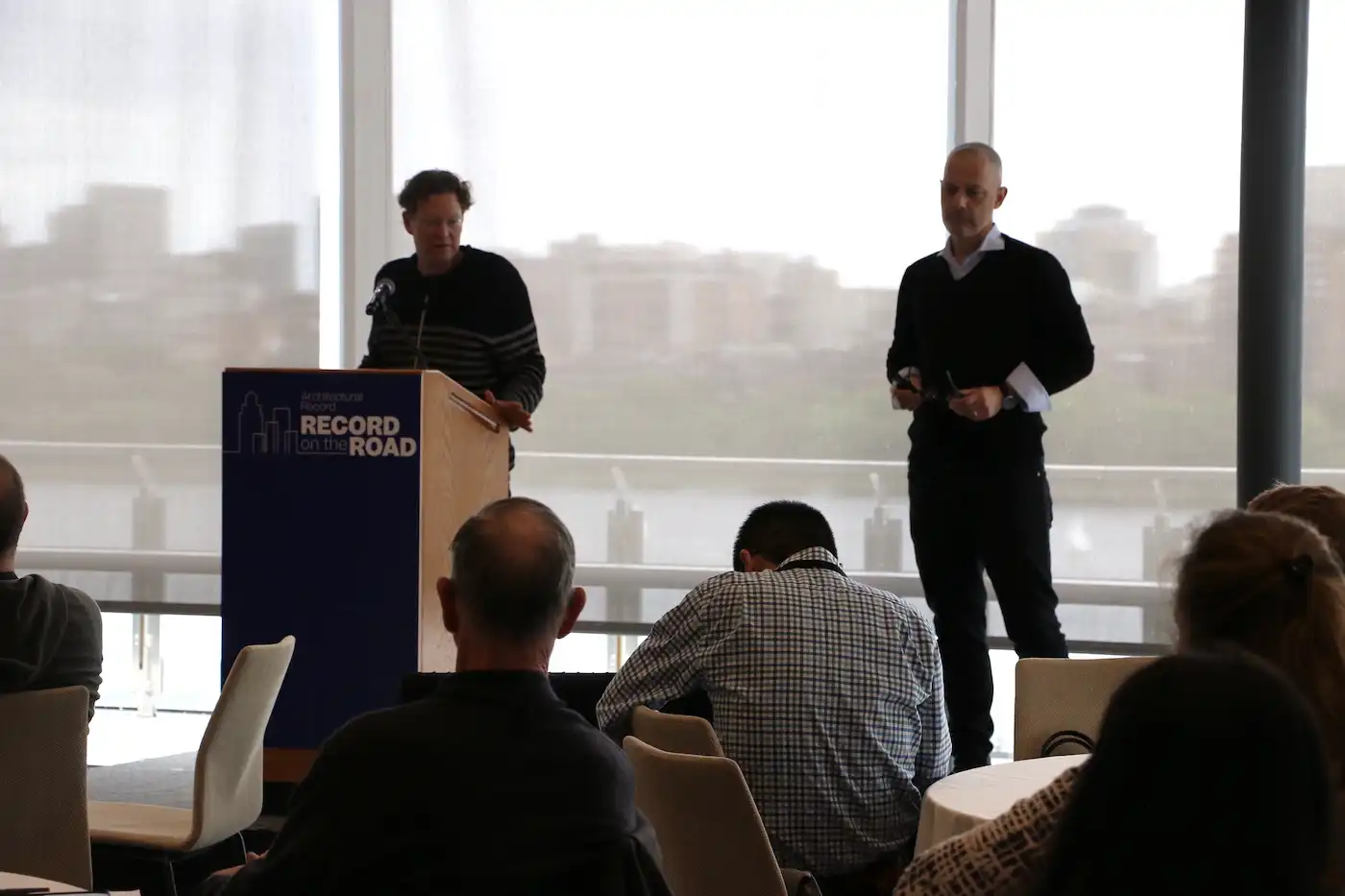
1
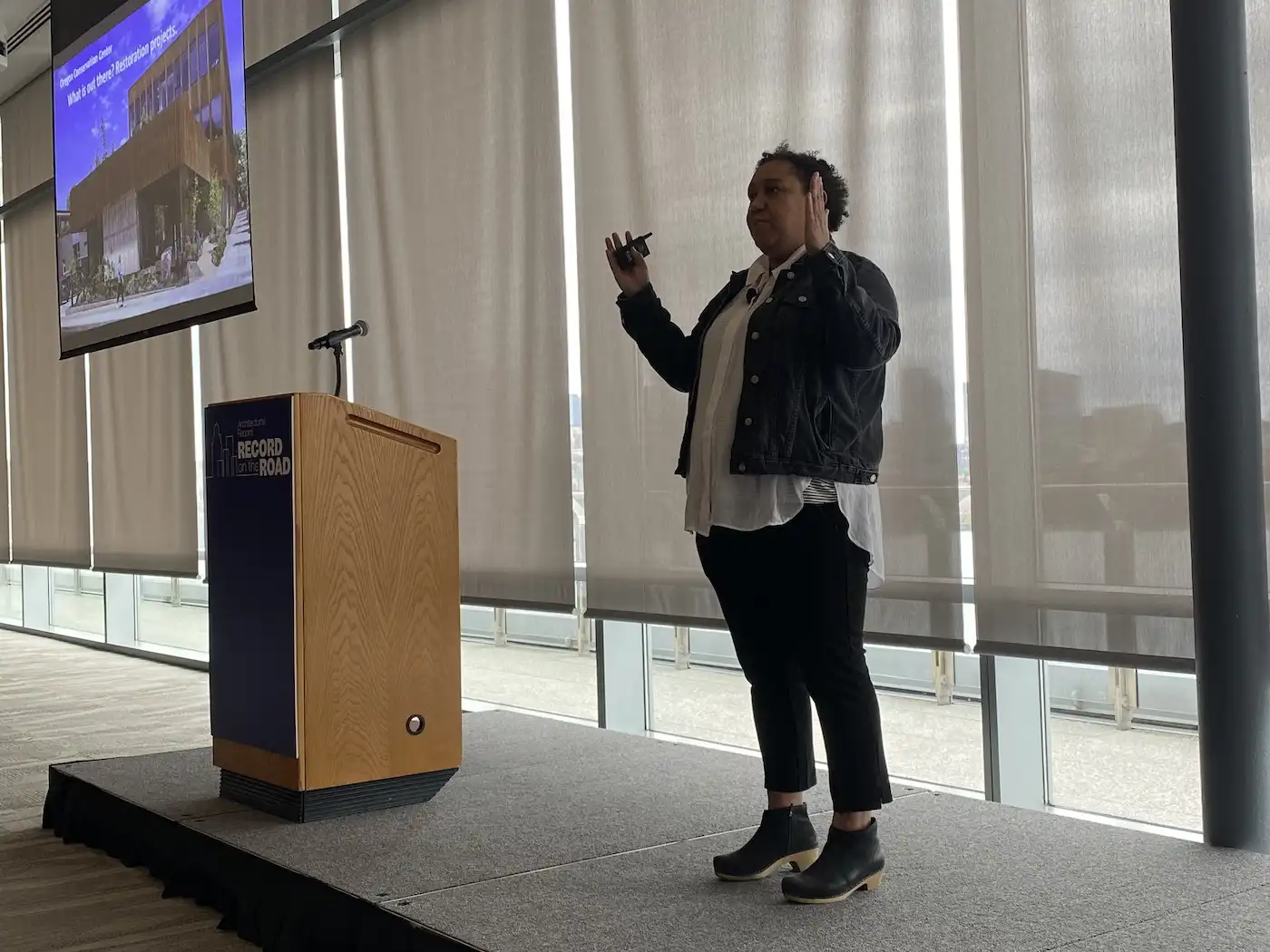
2
Christoph Reinhart (left) and Matt Noblett (right) present Close Hauled: Preparing Architects for the Energy Transition (1); Chandra Robinson presents Architecture Can Be More: Design Excellence Through Innovation, Sustainability, and Equity (2). Photos © Architectural Record
Chandra Robinson, a principal at LEVER Architecture reviewed her firm’s pioneering work in mass timber. Among the projects she discussed was Albina Yard, a four-story mass-timber office building completed in Portland, Oregon, where LEVER is based, in 2016—when there was only one press for making cross-laminated timber (CLT) in the entire state. LEVER worked closely with the CLT fabricator to understand the company’s manufacturing limitations and capabilities and followed the material, from “forest to frame.” She discussed mass timber construction as a strategy for creating a “circular, hyper-local economy,” stressing the importance of perpetuating that cycle in a sustainable way.
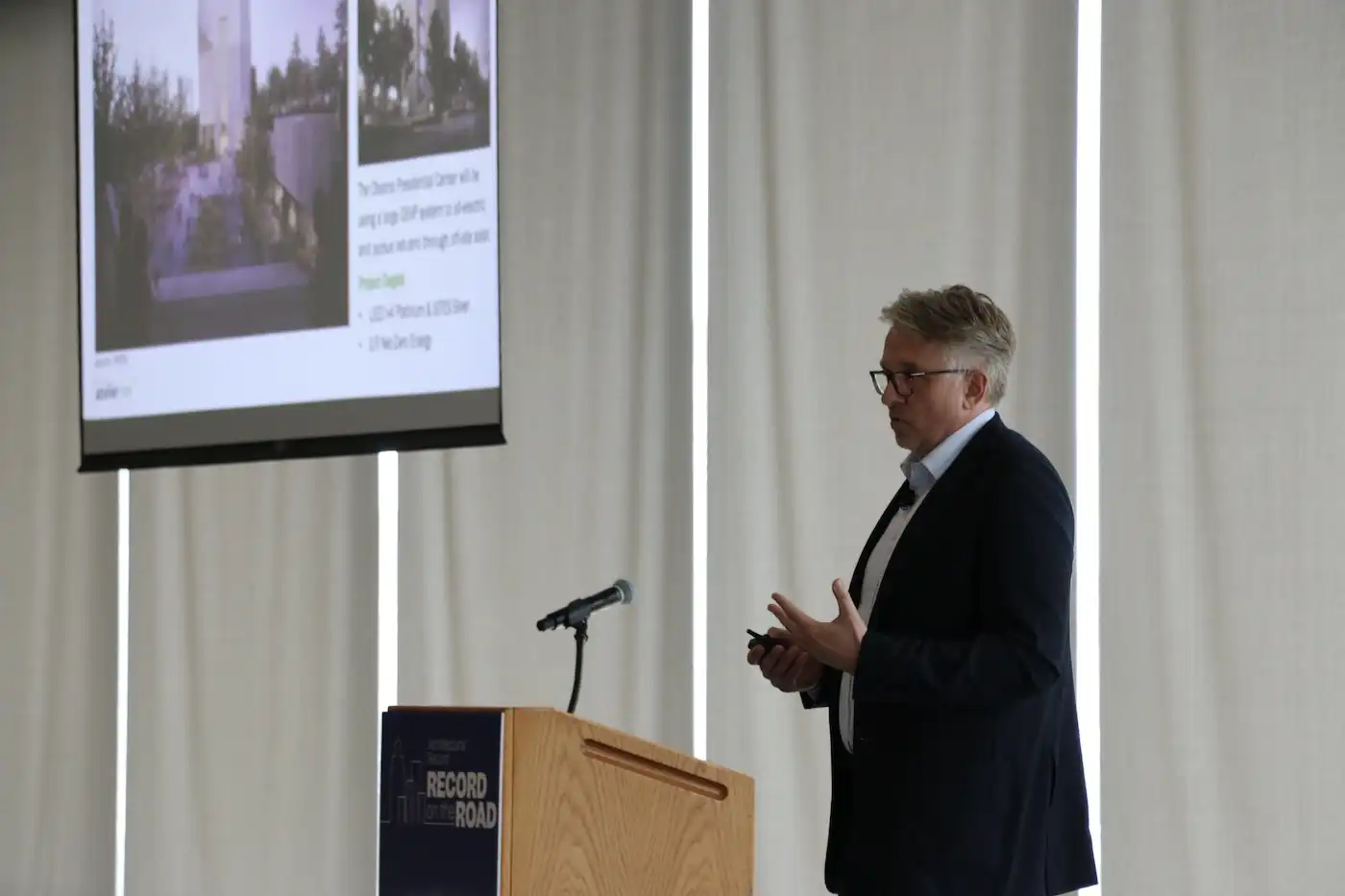
Nico Kienzl presents Towards Absolute Zero Carbon: Going Beyond Net-Zero for a No-Emissions Future. Photo © Architectural Record
Nico Kienzl, a director of the environmental consultancy Atelier Ten, explored zero-carbon buildings, reinforcing the short timeline for achieving climate goals discusssed earlier in the day. “We know we have a very limited window,” he said. His talk covered a range of technologies for bringing zero carbon within reach, including all-electric construction. Buildings that rely on fossil fuels will soon be obsolete, he predicted, becoming “stranded assets.” Among Atelier Ten’s all-electric projects is the Obama Presidential Center, designed by Tod Williams Billie Tsien Architects and currently under construction in Chicago. The center is expected to be 40 percent more efficient than a typical museum. Atelier Ten is also working with Diller Scofidio + Renfro and Leers Weinzapfel Associates on the transformation of a massive late 19th-century storage facility owned by MIT, the Metropolitan Warehouse, into the new home of SA+P. “Zero-carbon requires reuse,” said Kienzl.
In their presentation, MIT professors Caitlin Mueller and Sheila Kennedy also discussed circularity, giving an overview of their research into upcycling “under-valued, low-carbon materials,” including tree forks, wood pallets, and discarded brick. The pair is exploring the use of digitization, a variety of software, and custom scripts to repurpose these typically undesirable materials in unexpected ways, creating, for instance, asymmetrical timber trusses or highly textured, but non-uniform, masonry panels. “Perhaps irregularity is the aesthetic of green architecture,” said Mueller. “How much longer can we extract virgin materials?”
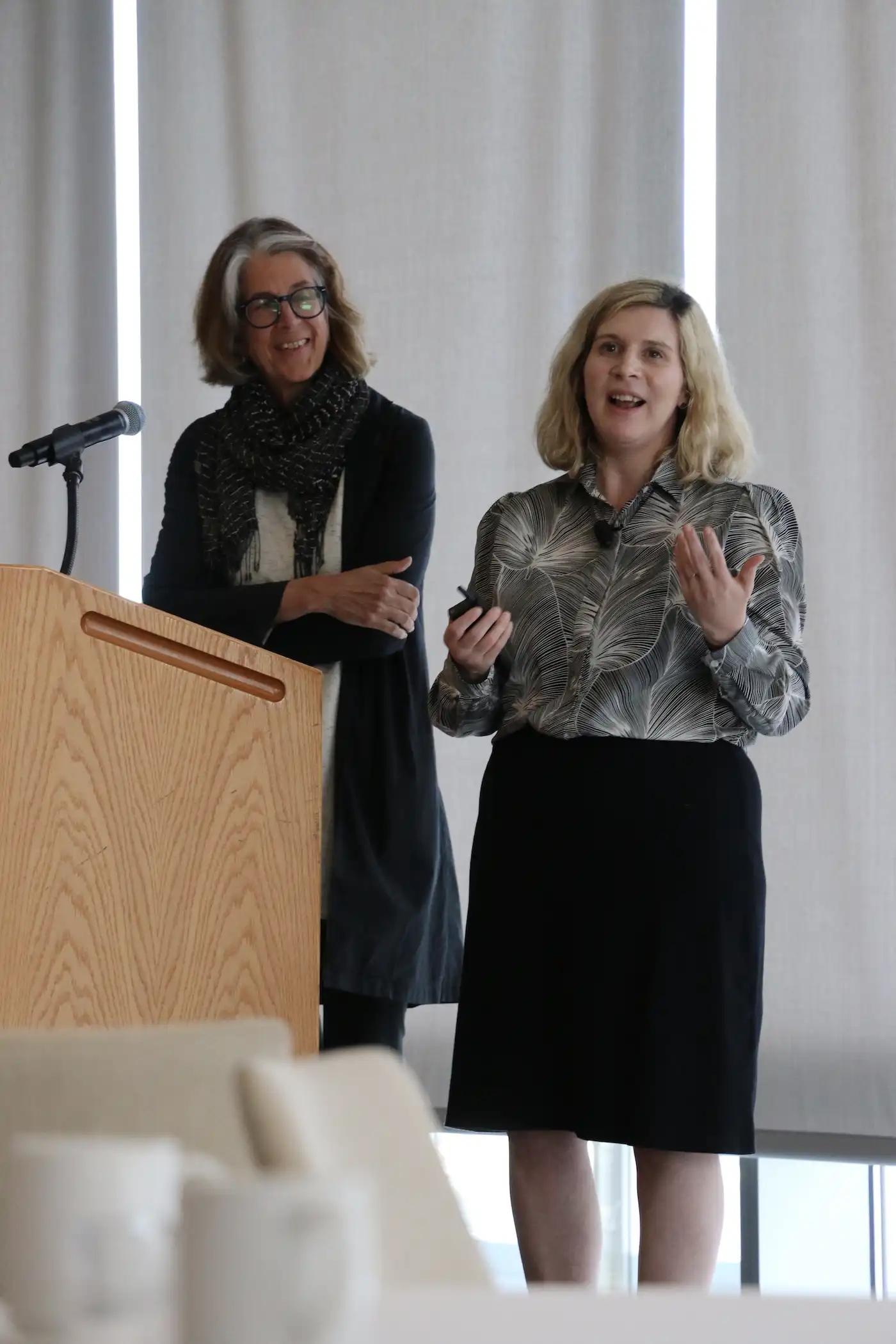
3
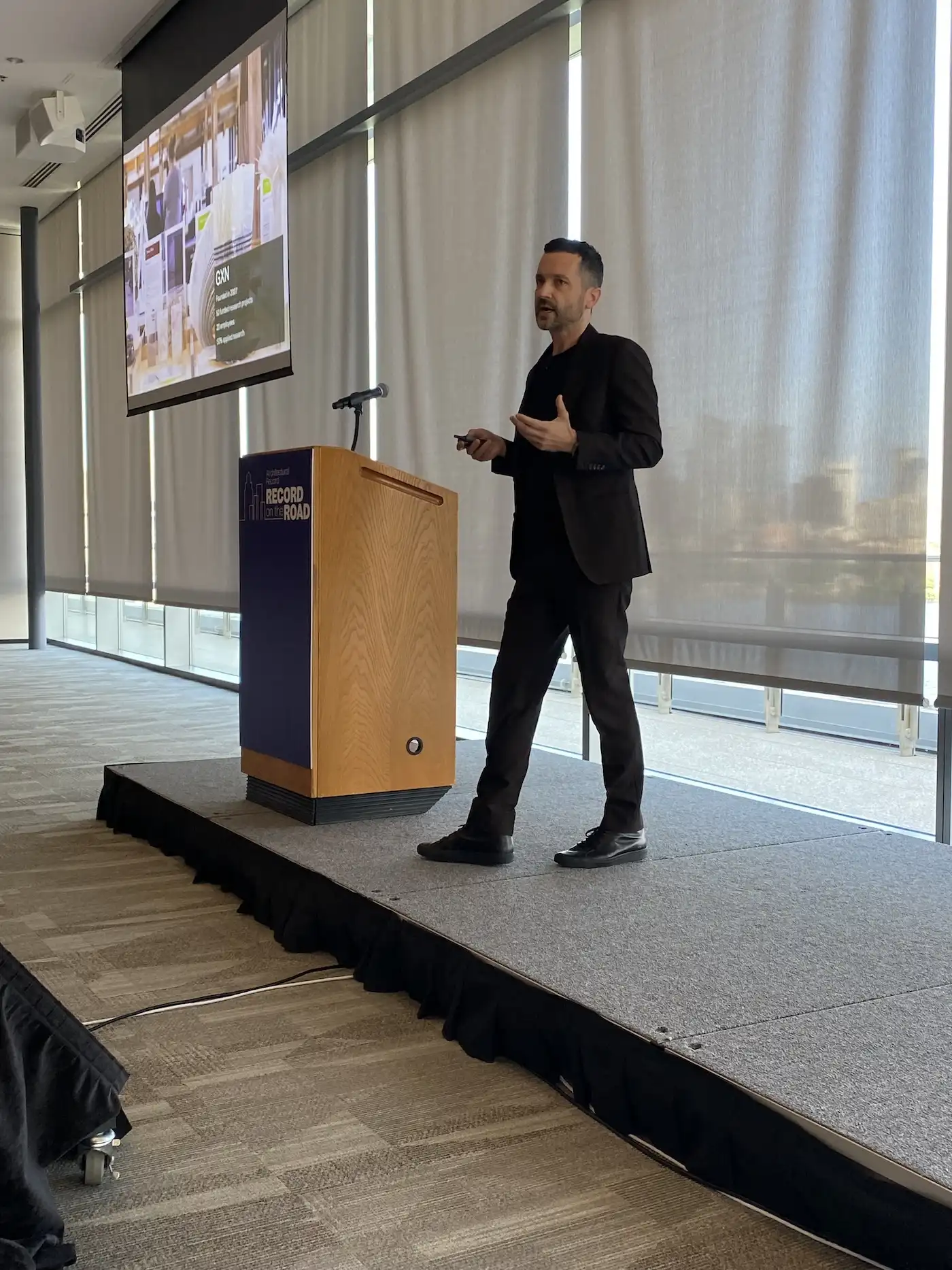
4
Sheila Kennedy (left) and Caitlin Mueller (right) present ODDS & MODS: Design Innovation for Scalable Material Circularity in Architecture (3); Fred Holt presents 3XN’s Quay Quarter Tower: An Urban, Social and Environmental Transformation (4). Photos © Architectural Record
To close out the conference, Fred Holt, a partner in the Australia office of the Danish firm, 3XN, focused on Quay Quarter Tower, the recent transformation and expansion of an outmoded 1970s office tower overlooking Sydney Harbor. As part of his talk, Holt explained how the radical reuse strategy, which saved about 12,000 metric tons of carbon (the equivalent of 8,800 flights between Copenhagen and Sydney), is finding its way into 3XN’s other projects, even when the existing structure is to be torn down. On one London project, for instance, the firm is conducting a highly detailed pre-demolition audit. The process, which Holt characterized as “urban mining,” will enable the reuse of the existing materials within the new building that 3XN is designing for the same site.
Some of these themes will be further explored at Record’s next in-person event, our annual Innovation Conference, to be held in New York on Thursday, October 26. Register here.



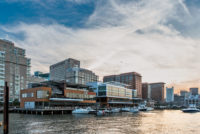
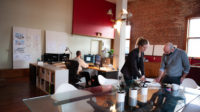
Post a comment to this article
Report Abusive Comment